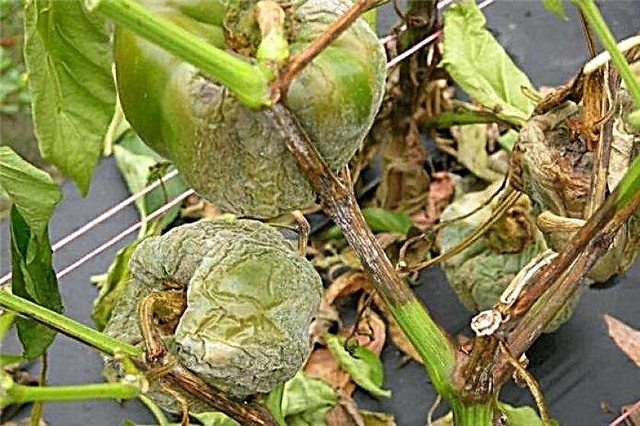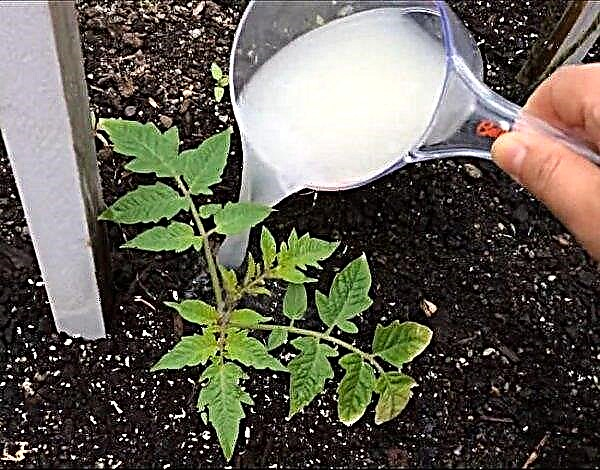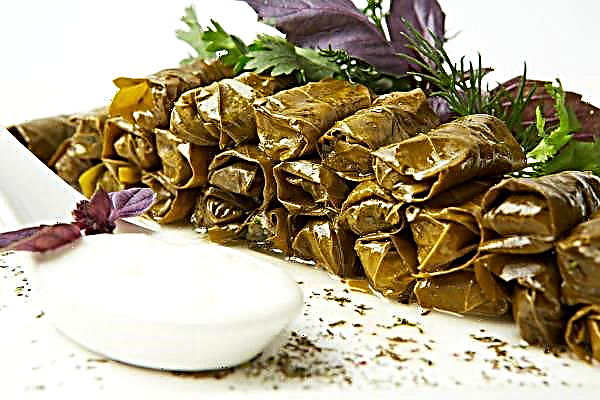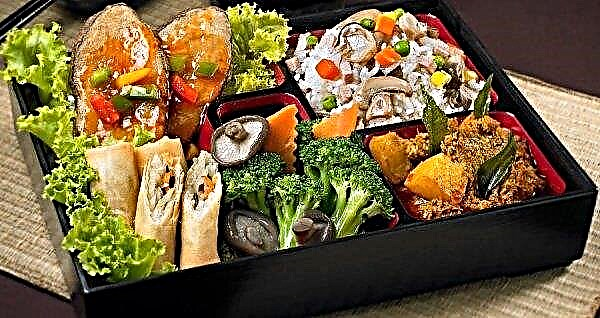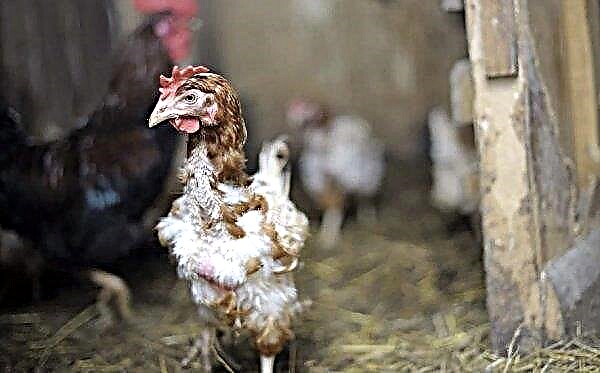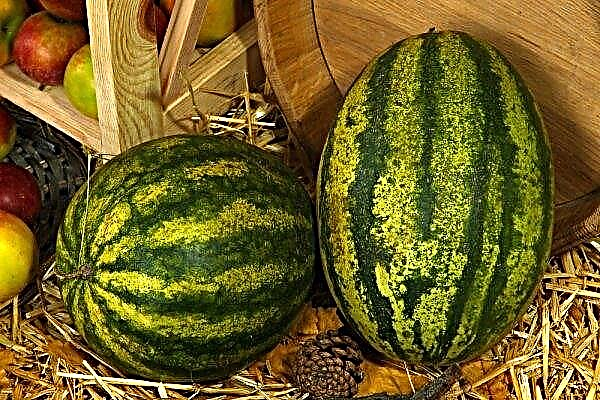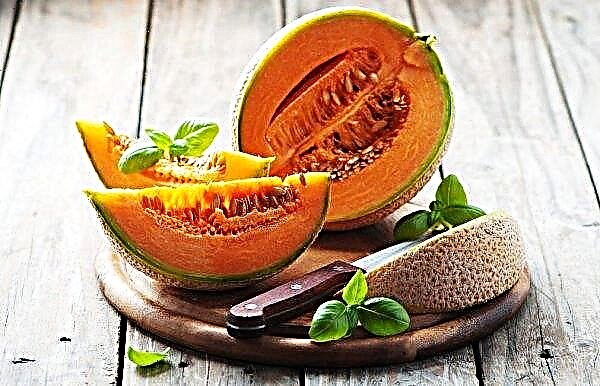Hothouse conditions are almost always a win-win option for obtaining an abundant harvest of vegetables, fruits and root crops. In addition, the most diverse greens are successfully grown in the greenhouse, among which parsley has an honorable place. What are the subtleties of its cultivation and what you should pay attention to when choosing and sowing a particular variety - read below.
The specifics of growing parsley in a greenhouse
Hothouse cultivation of parsley has its advantages and disadvantages associated with both the cultivation and further use of cut greens.
Advantages
The main advantage of greenhouse growing of greens is the possibility of year-round harvesting, and not only for personal use, but also for sale. In addition, the area of the average greenhouse is much larger than the space of the windowsill, so for those who regularly use it for this purpose, the greenhouse construction will be an ideal solution to the problem of limited space.
- Other advantages of greenhouse cultivation of root crops include:
- improved plant protection from diseases and pests (though only if legumes, cabbage, onions, tomatoes or other undesirable precursors were not grown in the same greenhouse before planting carrots);
- ease of care (growing greens in a greenhouse is much simpler than vegetables or fruits);
- constant replenishment of vitamin reserves in the cold season;
- obtaining economic benefits, since the sale price of finished greens is much higher than the funds spent on the purchase of planting material (in the cold season, greens are always in demand);
- the ability to grow plants even in an unheated greenhouse (though to a large extent in the southern regions and most of the central territories of the Russian Federation).
Disadvantages
- For all its undeniable advantages, the cultivation of parsley in a greenhouse can have some negative aspects:
- cut greens are not suitable for long-term storage, so you will have to find places of sale in advance or prepare the appropriate storage for saving frozen or dried greens;
- for year-round cultivation in regions with a harsh climate, you will have to take care of the heating system, the cost of which can be very tangible;
- parsley variety should be selected taking into account its frost resistance, especially for those cases when it comes to unheated buildings.

Selection of varieties for growing in a greenhouse
Not all varieties of parsley are equally well suited for planting in a greenhouse, so in order to get the maximum yield of greens, the question of choosing a specific variety should pay more attention.
The list of basic selection criteria in this case includes the following characteristics:
- the relevance of growing in a specific climate region;
- the possibility of cultivation in a closed type of soil;
- high resistance to diseases and insect pests characteristic of greenhouse conditions;
- maximum yield per unit area;
- a variety of parsley: leaf or root.
Each of the groups (leaf or root) has its own examples of the most suitable varietal varieties for greenhouse cultivation. In the first case, it is: Breeze, Moskrauh, Bravo, Esmeralda (average plant height - 60 cm with a leaf rosette diameter of 30 cm), and in the second (root green) - Harvest, Root Berlin, Leaf, Bordovik (despite late maturity, it differs high rates of keeping quality, for which it is appreciated by gardeners). Varieties for growing parsley in a greenhouse. Both parsley varieties include varieties of medium and late ripening, but when cultivated in a greenhouse, this is not so important - however, only when you grow a plant for yourself, and not for sale. In the latter case, it is important to sow and cut green leaves more often.
Varieties for growing parsley in a greenhouse. Both parsley varieties include varieties of medium and late ripening, but when cultivated in a greenhouse, this is not so important - however, only when you grow a plant for yourself, and not for sale. In the latter case, it is important to sow and cut green leaves more often.
Soil and seed preparation
Parsley does not impose special requirements on the composition of the earth, but moderately fertilized soils of light loamy or sod-podzolic type are considered the more preferable option. On heavy and knocked-down substrates, root crops grow poorly, and even if they reach the sizes declared by the manufacturer, they almost always have clumsy and ugly forms.
Did you know? An excellent anti-hangover cocktail can be made from parsley by mixing it with cilantro, mineral water and kefir in a proportion of 1 × 1 × 1 × 1, and then making a smoothie with a blender.
Before planting in a greenhouse, the soil must be properly prepared by mixing garden soil with peat and spilling it all with a solution of copper sulfate. This substance will help to destroy all the larvae of pests and pathogens that live inside, after which a small amount of complex mineral compounds and wood ash can be introduced into the soil. The higher the copper content in the solution, the more effective its action! After mixing the nutrient components, the substrate must be well loosened and grooves should be organized at a distance of 15–20 cm, adhering to the recommended depth of 10–15 cm for planting parsley rhizomes and 2-3 cm for sowing seeds. Of course, it is up to you how to sow the root crop, but it is still necessary to adhere to the general layout scheme on the site.
The higher the copper content in the solution, the more effective its action! After mixing the nutrient components, the substrate must be well loosened and grooves should be organized at a distance of 15–20 cm, adhering to the recommended depth of 10–15 cm for planting parsley rhizomes and 2-3 cm for sowing seeds. Of course, it is up to you how to sow the root crop, but it is still necessary to adhere to the general layout scheme on the site.
Preparing the seeds themselves consists of the following sequential steps:
- Sortings (the seed is soaked in water for 3 hours, and then all emerging empty specimens are rejected).
- Sprouting. To perform this procedure, the seeds are placed in a wet, folded in several layers of fabric, and left at room temperature for 4-5 days, constantly maintaining the moisture of the matter, until the germination.
- Hardening. Seeds that have already sprouted are sent to the refrigerator for 10 days, maintaining the inside temperature within + 1 ... + 2 ° C.
 Germination of seeds - a mandatory method of preparing parsley seeds!
Germination of seeds - a mandatory method of preparing parsley seeds!Dates of planting
In heated greenhouses, the timing of sowing parsley seeds does not make a fundamental difference, since in winter and summer, the same temperature is maintained inside the shelter. In unheated varieties of greenhouses, it is advisable to sow seeds in the spring (approximately at the end of March), when the soil warms up to + 5 ° С. If necessary, autumn sowing is also possible; True, in this case, it is better to give preference to soil types that are not prone to the formation of a strong and hard crust.
Planting and growing from seeds
Seed planting of greens is the simplest and most common variant of its cultivation. All that is required of the gardener is to properly prepare the seed and beds, and then place the seeds in the furrows, keeping between 3-5 cm of free space between them. At the end of the planting, the seeds placed are sprinkled with earth, compacted and watered abundantly with settled water.
Important! For good growth and development of greenery, it needs a sufficient influx of sunlight, so if there is not enough lighting in the cold season, it is worth organizing artificial lighting in the greenhouse by installing a daylight lamp around the perimeter.
With a large number of seeds, you can sow them a little thicker, and after emergence, leave only the strongest of them. In the future, all that is required from the gardener is to monitor the optimal indoor temperature (not lower than + 10 ° C) and periodically moisten the soil, while removing weeds. The optimum moisture level when growing parsley is 70–80%. Planting of greenery in closed ground can be carried out not only by seed, but also by planting rhizomes, which are preliminarily kept in sand at a temperature of + 2 ° C during the day. While the rhizome "insists" in the sand, grooves need to be organized on the prepared bed, at a distance of 10 cm from each other.
Planting of greenery in closed ground can be carried out not only by seed, but also by planting rhizomes, which are preliminarily kept in sand at a temperature of + 2 ° C during the day. While the rhizome "insists" in the sand, grooves need to be organized on the prepared bed, at a distance of 10 cm from each other.
They are abundantly moistened with water, after which the root crops are placed there with an interval of 10 cm, deepening them into the ground at an angle of 45 °. Planted specimens should be sprinkled with soil, but only so that the root neck remains above the soil surface, slightly compacted and pour plenty of water. After about a month, the height of the leaves will reach 25 cm and they can be cut into greens.
How much parsley grows in a greenhouse
The parsley germination period largely depends on the method of preparing the seed material: if the seeds are planted dry, then the seedlings will appear no earlier than in a month. In the case when the seeds were pre-soaked for several days in water and they managed to sprout, their germination rate in the greenhouse will be doubled. A few weeks after the appearance of green sprouts, it will be possible to cut the first crop.
Greenhouse parsley care
Caring for parsley in greenhouse conditions is based on the same actions as when growing a crop in open soil.
The main activities in any case will be:
- timely watering of the crop;
- row-spacing loosening;
- fertilizer plants.
It is possible to determine the need for additional wetting of the substrate based on the state of the upper soil layer: if the soil compressed in a fist crumbles or dusts, then it's time to water the parsley using the sprinkling method. With jet irrigation, you can wash the seeds from the ground, so you should not use this method.
If organic fertilizers were used in preparing the garden for planting parsley, then for further cultivation, it is worth using only complex mineral fertilizers (including phosphorus-potassium fertilizers), introduced according to the manufacturer's recommendations. Choosing the type of suitable fertilizer, it is worthwhile to focus on the variety of planted parsley.
Important! Fresh, not overripe manure is not the best solution for fertilizing parsley plants. Such a composition may well burn tender sprouts, thereby depriving the gardener of the crop.
For example, leaf-type varieties are fed twice a season with saltpeter, in the calculation of 50-60 g of substance per 1 m², while phosphorus-potassium fertilizers are more appropriate for root parsley. In spring, complex mineral compositions will be relevant for any type of greenery, and during the formation of root crops, parsley is well fed with potassium salt, calculated at 50 g per 1 m² of plantings, and superphosphate - 70 g per 1 m².
Harvesting and storage
Harvesting greenhouse parsley follows the same scenario as when growing it in open ground. The green part must be carefully cut with garden scissors or a sharp knife, and then laid out in a single layer on a clean surface to dry and evaporate excess moisture. Slightly dried parsley is placed in boxes and wrapped in polyethylene to prevent its excessive drying.
Over the next day, the grown greens must be sent for sale, frozen or dried for their own further use. Thus, parsley grown by hand will not only become a valuable vitamin source for the whole family, but will also be able to bring considerable income, which will be profitable even with certain financial costs for arranging the greenhouse.

